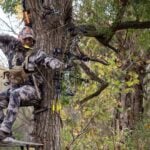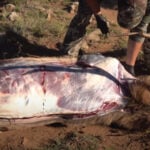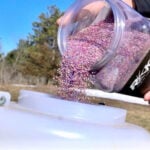A climbing tree stand offers bowhunters the ability to move around from place to place with minimal effort, thus being able to hunt where the sign is the freshest. Here’s a few pointers on how to use a climbing treestand safely in order to maximize your chances for success.
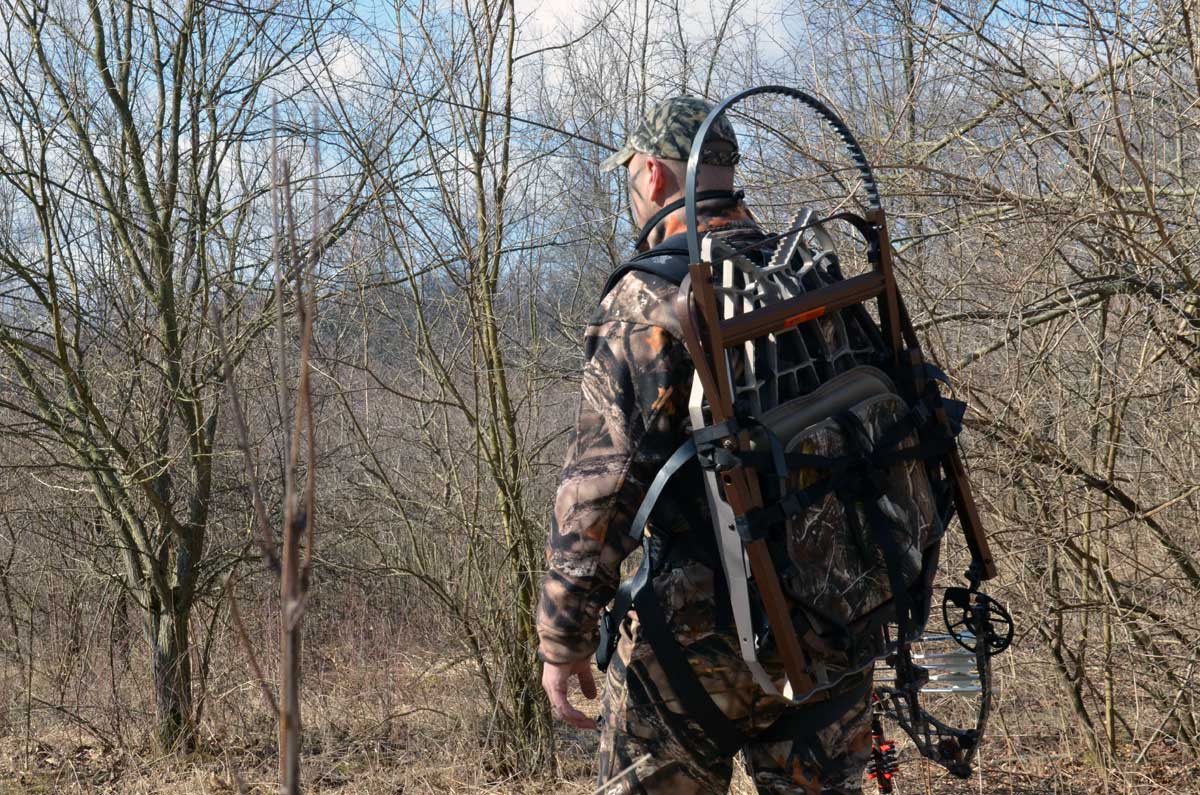
Choosing The Right Climbing Stand
When it comes to using a climbing treestand, the first thing that should be considered is the area it will be used in. For example, if fairly easy terrain will be traversed, then a slightly heavier model would be acceptable.
However, that same stand, when used in the mountains or other difficult areas to access, will quickly become a liability. Therefore, make sure the type of stand chosen will allow quick and quiet movement. Specifications such as weight, size, and “ease of set up” are all crucial aspects to consider.
Choosing The Right Tree
Once the right stand has been chosen the next thing is to pick the right tree to climb. That may sound odd but when it comes to using a climbing treestand the type of tree chosen can have a huge bearing on one’s ability to get off of the ground and above the deer’s line of sight.
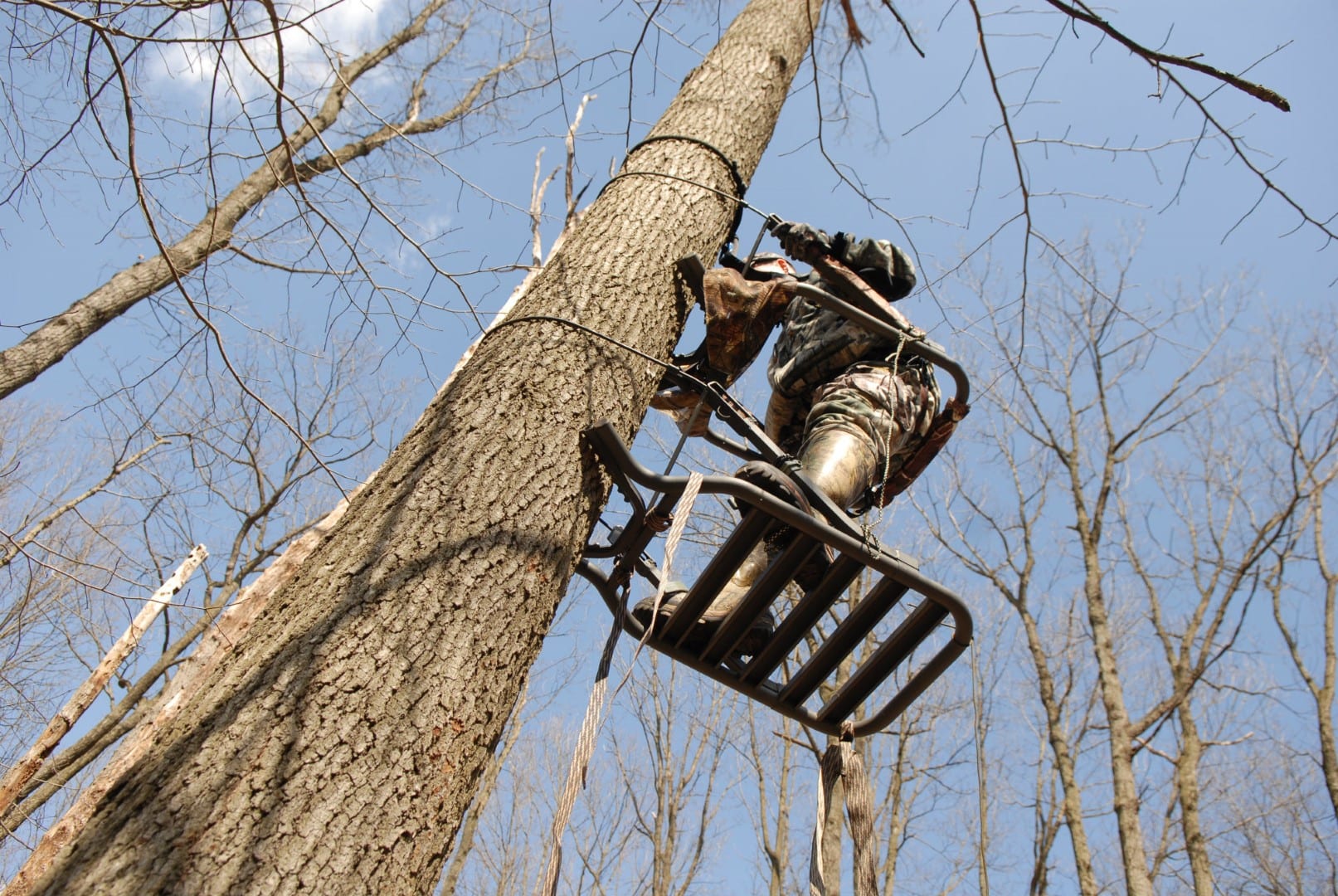
The main thing to look at before climbing a tree is how wide it is and how much of its width does it carry upward. In other words, a tree that is wide at the bottom and gets extremely narrow as it goes up is going to present some problems during the climbing process and most likely prevent an acceptable hunting height from being reached.
Ideally, a tree that doesn’t lose much of its width as it goes up is best. Unfortunately, the best trees aren’t always in the best locations and most likely one that isn’t the ideal shape must be used. When this happens, and it will, knowing how to set the stand correctly at ground level in order for it to be just right when hunting height is reached is critical.
When selecting the right tree to climb you also want to look at the angle of the tree and whether or not it has any branches that you may need to trim out of your way on the journey up.
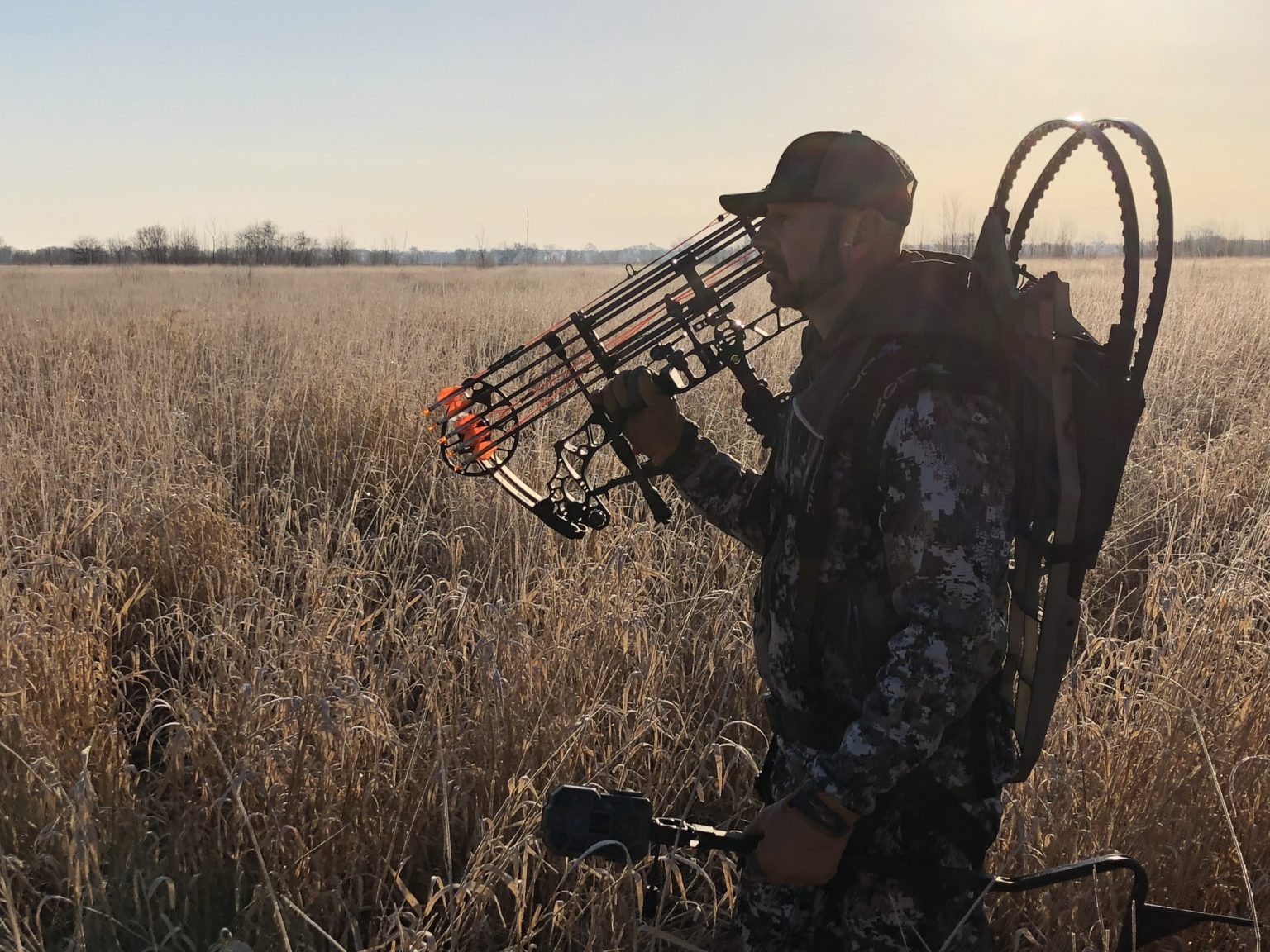
Achieving The Right Treestand Angle
Let’s start with the perfect situation. This means locating a tree that is almost as wide at the bottom as it is at the top. In this case, when the stand is attached, very little “upward” angle must be placed in the platform in order for it to sit LEVEL once the desired hunting height is reached.
Just remember, the less overall loss in tree diameter the lesser the starting angle must be in order to compensate for platform drop.
Now, let’s look at the worst case scenario. Here the tree is wide at the bottom and gets fairly narrow as it goes up.
This tree can still be climbed as long as it isn’t so small that it prevents the treestand’s attachment system from safely biting into the tree. The trick is to angle the platform UPWARD enough to compensate for the drop that the difference in diameter will create.
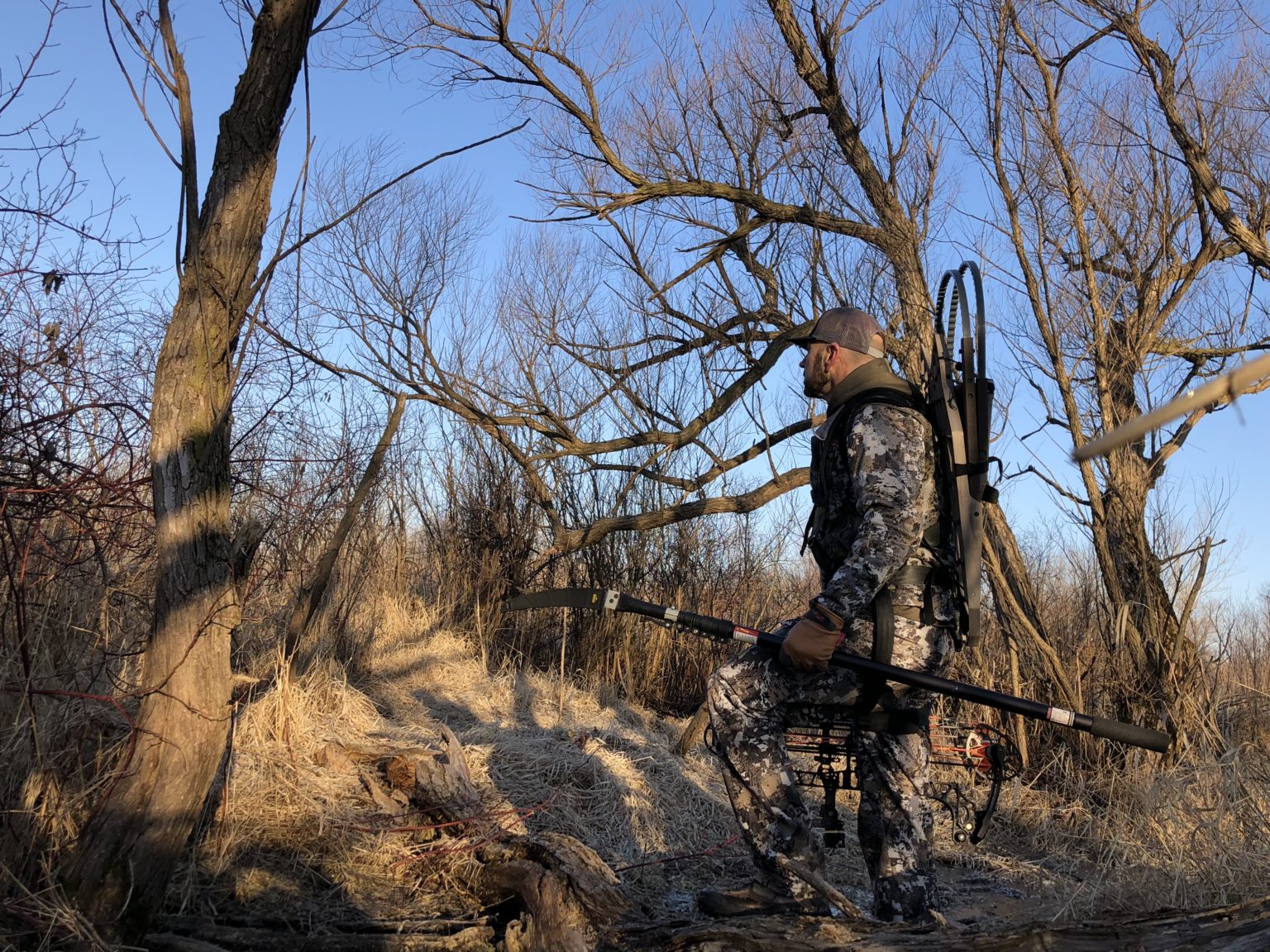
When tree diameter changes with height, the front of the platform will drop as the stand moves further up the tree.
Essentially, it will be pointing down (often too much to safely hunt) by the time a necessary hunting height is reached. When this happens, climbing back down and increasing platform angle or choosing another tree is the only options. Either scenario is time consuming and only serves to alert deer to the fact they are being hunted. The more you use your climbing stand the more you will get used to the proper amount of angle that will be necessary to climb any particular tree.
Securing Top and Bottom Section
The right tree has been selected, platform angle is set and now it is time to step inside the treestand and begin climbing.
However, before actually climbing can start, some safety measures must be taken in order to ensure a safe climb and descent. The first thing that should be done is to make sure that the top and bottom pieces of the treestand are attached to each other. This will prevent the bottom section of the stand from crashing to the ground in the event that it should slip from the feet during the climbing process.
Most treestands come with some sort of bungee cord or rope tied to both sections for this purpose. If your climbing stand does not include these stabilizer straps we recommend purchasing a pair before attempting to climb any tree.
Securing Feet To Stand
With both sections of the climbing treestand secured to one another to prevent separation during the climb, both feet should also be secured to bottom platform. This will aid the climbing process in two ways.
One, it prevents the feet from slipping away from the stand and allowing it to fall. Two, in order to pull the bottom section of the treestand UP, you must pull it with your feet and legs.
Yes, the rope attached to the top section will stop it from hitting the ground but it will still fall as far as the connection rope will allow. This is one reason why the connection rope should never be too long.
Typically, this connection rope should be just long enough to allow the hunter to perform the motions required to climb.
Depending on the make and model of your tree stand you may need to slip your feet under a metal bar or stirrups of some sort. Check the owner’s manual for your particular stand for a guide on exactly where to place your feel while climbing.
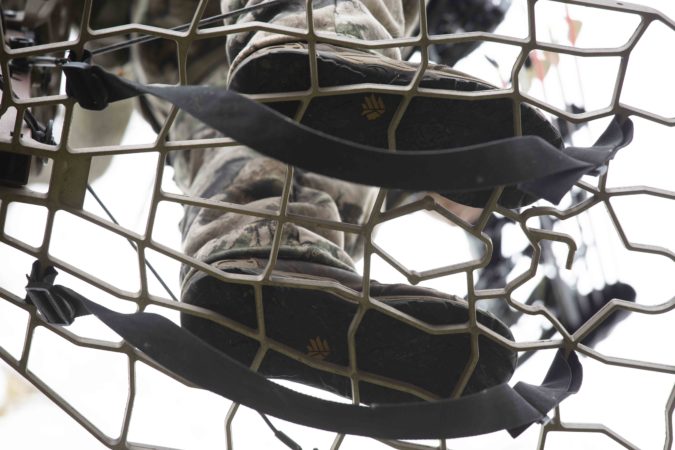
Securing Yourself To The Tree
Lastly, before the climbing process begins, make sure to properly secure yourself to the tree. This will prevent a fall if the treestand should happen to break. Some bowhunters choose to attach themselves to the tree AFTER they have reached the desired height, but unfortunately, in the event of a treestand failure during the climb, it will be too late.
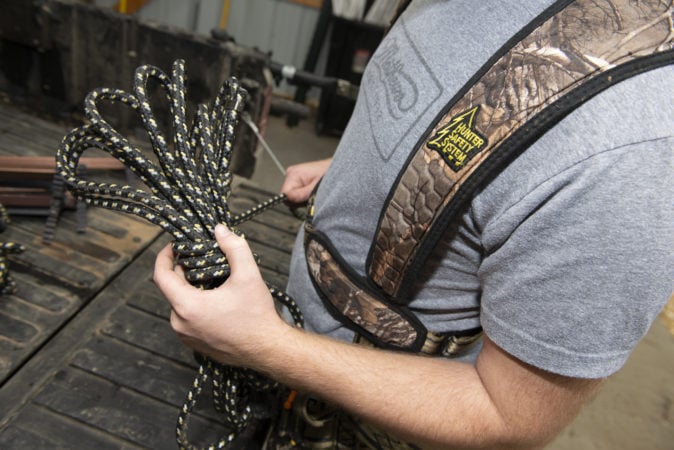
Therefore properly securing yourself to the tree is the safest way to climb. This can be achieved very easily through use of a full body safety harness and a safety tether. Simply fasten the tether to the tree above your head and secure your harness while climbing.
As you move up the tree you can loosen the tether and move it up as you go, never disconnecting yourself from the tree. Remember, ALWAYS remain connected to the tree from the time you leave the ground until you return down at the end of your hunt.
Begin Climbing
To begin climbing using a “sit and climb” style treestand, simply move the top section of the climbing stand high enough so that it can be comfortably sat in while still reaching the bottom section with both feet.
Next, bring the bottom section upward by pulling it with both feet. Then, stand up and move the top section up far enough to sit in the stand once again. Repeat the process until the desired height is reached.
Once all backpacks and gear is secured to the tree, draw the bow back to ensure that nothing interferes with the drawing motion. The hunt can now begin.
Note: Not all treestands are “sit and climb” models. Some climbing treestands can be used with the hands instead of posterior (sitting in them). These treestands are known as hand climbers. The climbing process will resemble that of a “sit and climb”, only, instead of sitting and bringing the feet up, the user will place their hands (sometimes chest) on the upper section while pulling the legs upward.

 By
By 